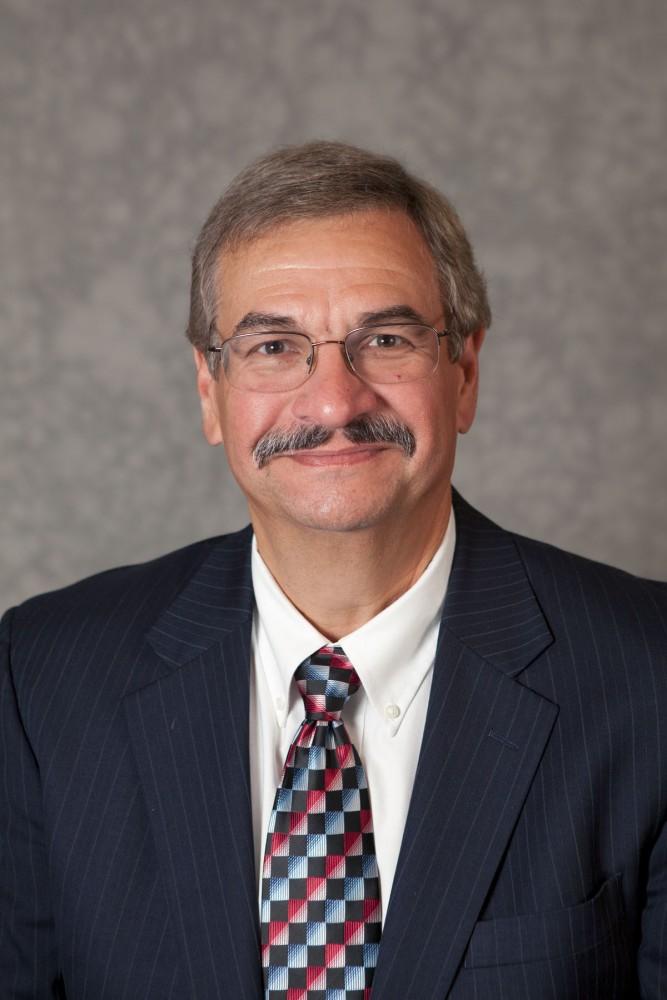Recognition for cooperative education

GVL / Courtesy – GVSU.edu Paul Plotkowski
Feb 26, 2015
Paul Plotkowski, dean of the Seymour and Padnos College of Engineering and Computing at Grand Valley State University, and Joe Gibson, a computer engineering major, were recognized at the American Society of Engineering Education’s Conference for Industry and Education Collaboration (CEED) earlier this month.
At the conference, held Feb. 4-6 in Palm Springs, Calif., Plotkowski received the Alvah K. Borman Award for his leadership in cooperative education at GVSU.
Hundreds of faculty from universities with co-op programs, as well as partners from industry, attended the conference, Plotkowski said.
“It’s actually kind of humbling to receive recognition like this,” he said. “I’ve just been doing what all of those good people have been doing.”
Plotkowski said cooperative education belongs to the broader umbrella of experiential learning, which is implemented in many disciplines.
“The whole idea is to give students learning outside of the classroom while they’re still a student,” he said.
In the engineering program, students alternate between full-time work and full-time school each semester. Under Plotkowski, the co-op program has seen rapid growth, from a handful of companies to over 200 companies, local and around the world.
Projects are currently in the works for fall semester to accommodate more students, improve computing hardware and infrastructure and more.
“Mostly we’re just trying to keep up with a lot of growth,”Plotkowski said.
Joe Gibson received the Cooperative Education Student of the Year Award. He was unable to attend the conference, but the GVSU Communications department created a video to present his work in computer engineering, which covers a broad range of experiences.
Gibson has done co-op work with three companies: L-3 Communications in Muskegon, NASA in Washington, D.C. and the European Organization for Nuclear Research (CERN) in Geneva, Switzerland – the largest particle physics laboratory in the world.
“It felt great,” he said of receiving the award. “I’ve worked pretty hard through co-op, so it was pretty cool to get recognized for that.”
At NASA, Gibson worked on the Balloon Experimental Twin Telescope for Infrared Interferometry (BETTII), which he described as a telescope attached to a balloon that flies beneath earth’s orbit at around 130,000 feet. This prototype is equipped to collect data that will provide astronomers a better understanding of star formation, galaxy evolution and the formation of planetary systems around other stars.
“It was amazing,” Gibson said of his work at NASA. “I got to work with some of the most high-caliber people in the world.”
At CERN, Gibson said he worked on a software that helps physicists plot data in their research in quantum chromodynamics. He also got to see the Large Hadron Collider, the largest participle collider in the world, which is used to test theories in particle and high-energy physics.
Working at NASA was “one of the coolest things I’ve ever done in my life,” Gibson said.
This also provided an opportunity for him to make connections.
“It’s kind of a childhood dream,” he said. “It was pretty cool to actually realize that.”
Gibson will graduate April and has plans to attend grad school.





















